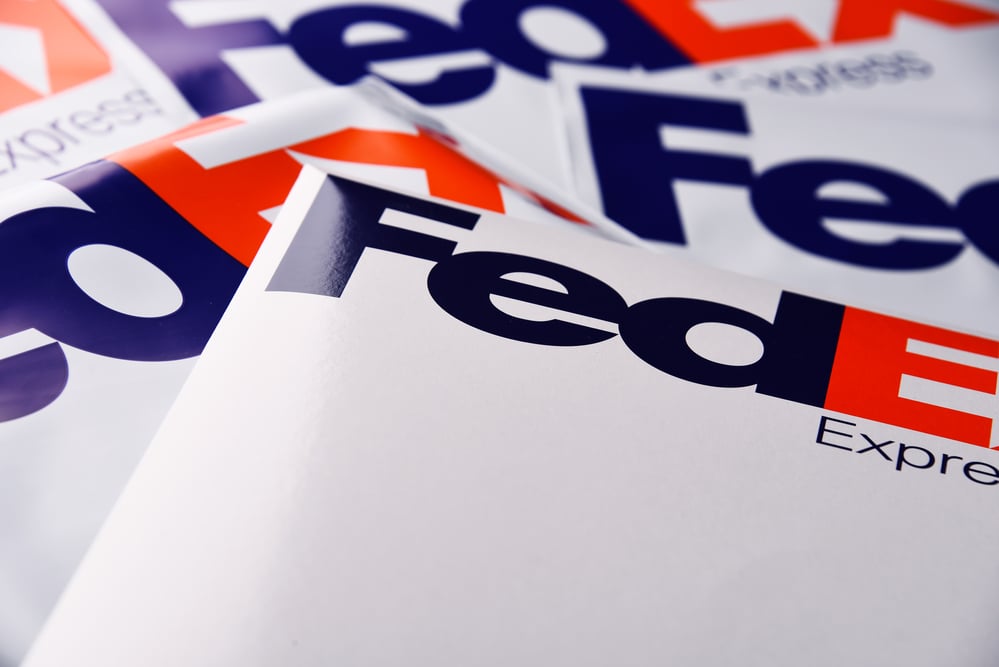
Back when the internet was first getting started, and people were actually capitalizing the first letter, the notion of being able to send letters electronically gave a lot of shipping magnates pause. What was the point of sending a letter or short document overnight by FedEx (NYSE:FDX) or its contemporaries like UPS (NYSE: UPS) when a quick mouse click could send that same document in seconds? Over the years, FedEx and UPS asserted their place in the market, though recently, FedEx's fates haven't looked so sharp. In fact, one Oppenheimer analyst suggests that, though FedEx shares have bottomed out, it's still not an attractive buy.
A Sluggish Earnings Report Prompts Distress Among Investors
FedEx's second quarter earnings report turned out to be something of a disaster for the company. After-hours trading saw some unpleasant drops, and though shares are rebounding a bit as of this writing, it's almost looking like a dead-cat bounce rather than a recovery in the making. These things can change on a dime, of course, but right now the delivery magnate isn't looking up to snuff.
While FedEx did have some reasonable excuses, many felt hollow. It pointed primarily toward increasing weakness in the global economy, along with higher costs for FedEx Ground, the shortened holiday shopping season, increased competition in pricing, and what it called “the loss of business from a large customer”. likely referring here to the ongoing disaster that is the loss of Amazon business. The issues between Amazon and FedEx are actually sufficient to lead some to wonder about a resurgence of the brick-and-mortar economic model, which has been taking it on the chin in recent years.
Rock-Bottom Pricing But Still Not Attractive
The notion that the price drops are over for FedEx comes from several different sources. While on the post-earnings conference call, FedEx's chief financial officer Alan Graf noted that “we are at the bottom.” That's not exactly encouraging news by itself but does suggest a path upward. A path upward would definitely be welcome news for a stock that had already seen its biggest one-day loss in over a decade, which happened back in September when the company vented 12.9% of its value in one day.
Further catastrophes arose with FedEx's Amazon connection, as FedEx had not only lost its air-shipping contract with Amazon back in June—which may have had something to do with that monster September loss—followed by the loss of the FedEx Ground contract with Amazon.
All of this combined has likely left investors a bit skeptical that, indeed, the company's string of losses has finally reached its conclusion. Analysts, too, are skeptical; Oppenheimer's Scott Schneeberger actually had been bullish on FedEx for the last three years, until now; while he's expecting some of the economic troubles the company is facing externally to wind down, and also expects some improvement in the stock price in its second half, the company's rating was nonetheless lowered from “outperform.”
Schneeberger wasn't alone here; Ken Hoexter with Bank of America Merrill Lynch maintained a neutral rating but instead dropped the price target from $170 down to $163. Hoexter pointed to an echo of history for a lot of the motivation behind the drop, noting that the last time FedEx had seen a similar drop in second-quarter normalized earnings as compared to the year before was back in the Great Recession.
Worse, Hoexter noted, FedEx Ground's operating income was 34% below what target estimates said it should be, a development that hasn't been seen since the company started following FedEx Ground 18 years ago.
Another Sea Change in Retail?
We've seen a lot of changes in retail lately. We've seen mall tenants like Children's Place (NASDAQ: PLCE) and American Eagle (NYSE: AEO) lose ground while stores like Target (NYSE: TGT) recover a lot of lost ground, in part by using their massive network of stores as a pickup point for online shopping. It represents perhaps the greatest response brick-and-mortar has staged yet to the online shopping phenomenon: no matter what you buy on Amazon, it's still pretty much a two-day wait until it arrives at your door. And that arrival depended on operations like FedEx, UPS, and even the US Postal Service to close the gap.
With FedEx wavering, and Amazon taking up some of the slack itself with its branded vans—who hasn't seen a van with the “Prime” logo on its side out in traffic lately?—that two-day gap may be more than customers are willing to bear. Online shopping will always have its place; I personally managed to help my mother find a gift online recently that she could find in no other store. Yet the death of brick-and-mortar seems to have been greatly exaggerated, point carriers like FedEx would do well to remember.
Before you make your next trade, you'll want to hear this.
MarketBeat keeps track of Wall Street's top-rated and best performing research analysts and the stocks they recommend to their clients on a daily basis.
Our team has identified the five stocks that top analysts are quietly whispering to their clients to buy now before the broader market catches on... and none of the big name stocks were on the list.
They believe these five stocks are the five best companies for investors to buy now...
See The Five Stocks Here
With the proliferation of data centers and electric vehicles, the electric grid will only get more strained. Download this report to learn how energy stocks can play a role in your portfolio as the global demand for energy continues to grow.
Get This Free Report
Like this article? Share it with a colleague.
Link copied to clipboard.